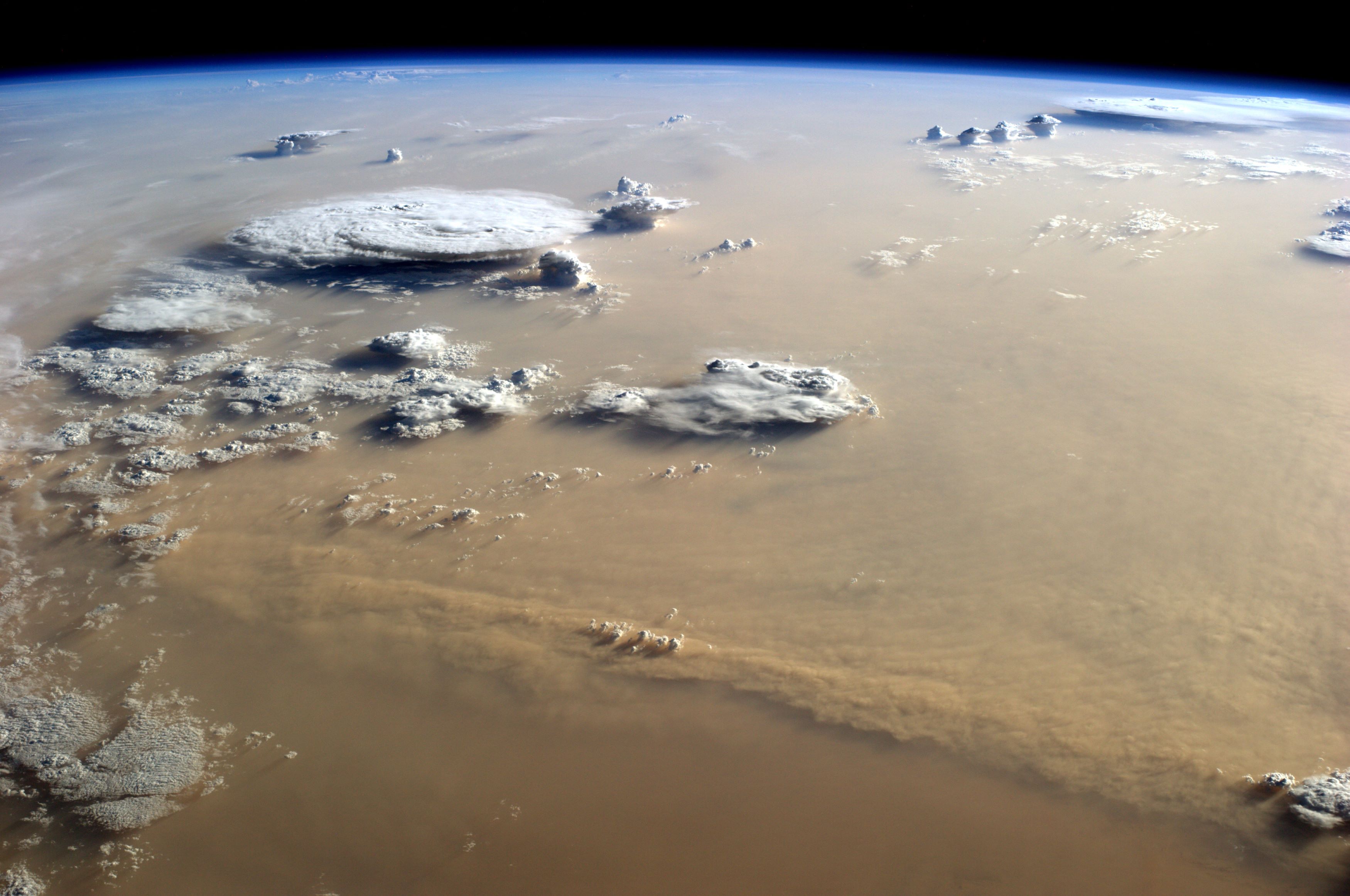[:ja]アレックス・ゲルスト宇宙飛行士がISSから撮影したリビア付近のサハラ砂漠の砂嵐です。

大気中に巻き上げられる砂の量はサハラ砂漠が最大で、また、海洋に堆積する砂の半分以上はこの北アフリカのサハラ砂漠によるとされています。サハラの砂粒には植物の成長に不可欠なリンが豊富に含まれており、大西洋や南北アメリカに養分を供給しているとされています。洪水や自然風化などで傷んだアマゾン地域の土壌に養分を供給している、つまり、生物の宝庫であるアマゾンの熱帯雨林の成長が少なからずアフリカ大陸の砂によって育まれている可能性もあると指摘します。画像では左方(東)から風が吹き、日は右方(西)に沈んでいくところです。また、形成された積乱雲から寒冷前線が砂漠上を通過していることがわかり、ハブーブ(乾燥地域における強い砂嵐)であると見られています。
地上の様子はこちらです。

参考文献: Dust and Clouds Dance Over the Sahara (NASA Earth Observatory)
地球俯瞰画像を見る: LiVEARTH
[Earthview Wonders] No.1128: Saharan Dust🇱🇾
Astronaut Alex Gerst captured from ISS the dust and clouds over the Sahara Desert in Libya.

It is considered more than half of the dust deposited in the ocean lifts off from the Sahara Desert region. According to NASA, the Saharan dusts contain rock minerals such as phosphorous, an essential nutrient for plant proteins and growth, and is thought to provide nutrients for the Atlantic Ocean and distant Americas. In the photo, winds appear to be coming out of the east (left of the image), and the sun is setting to the west (right). Billowing cumulus and cumulonimbus clouds suggest that a cold, windy front was moving across the desert, perhaps a haboob (a type of intense dust storm carried on an atmospheric gravity current).
The local scenery on the ground is as follows.

Reference: Dust and Clouds Dance Over the Sahara (NASA Earth Observatory)
See earthview photo gallery: LiVEARTH[:en][Earthview Wonders] No.1128: Saharan Dust🇱🇾
Astronaut Alex Gerst captured from ISS the dust and clouds over the Sahara Desert in Libya.

It is considered more than half of the dust deposited in the ocean lifts off from the Sahara Desert region. According to NASA, the Saharan dusts contain rock minerals such as phosphorous, an essential nutrient for plant proteins and growth, and is thought to provide nutrients for the Atlantic Ocean and distant Americas. In the photo, winds appear to be coming out of the east (left of the image), and the sun is setting to the west (right). Billowing cumulus and cumulonimbus clouds suggest that a cold, windy front was moving across the desert, perhaps a haboob (a type of intense dust storm carried on an atmospheric gravity current).
The local scenery on the ground is as follows.

Reference: Dust and Clouds Dance Over the Sahara (NASA Earth Observatory)
See earthview photo gallery: LiVEARTH[:]